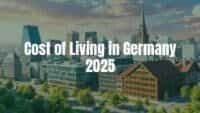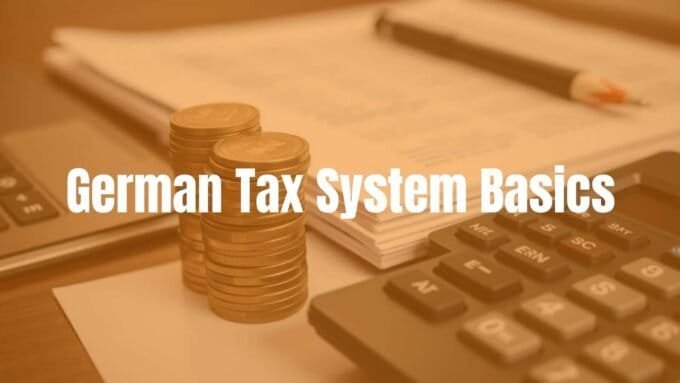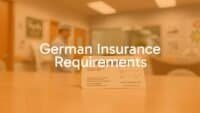Germany is seen as a world leader in using and expanding renewable energy. The country has shown steady commitment to moving away from fossil fuels. This effort is guided by clear goals and a widely known energy plan called the Energiewende. This article will present key facts, recent numbers, the main types of renewables in Germany, the rules and policies involved, and the ongoing challenges the country faces.

Key facts about renewable energy in Germany
What share of Germany’s energy is renewable?
Germany has made huge progress in shifting its energy supply to renewables. In 2024, 59.0% of the electricity made in Germany (254.9 TWh out of 431.7 TWh) came from renewable sources. This is an increase from 52% in the first nine months of 2023. Looking back further, renewables went from just 3.5% of electricity in 1990 to 52.4% in 2023. This steady growth highlights Germany’s serious approach to clean energy.
However, it’s good to remember that not all energy use is electricity. Sectors like transport, heating, and cooling are slower to switch to renewables. Germany’s renewables covered 13.9% of heat and cooling and 5.1% of the transport sector back in 2016. Still, improvements continue in all these areas.
How much has Germany lowered its greenhouse gas emissions?
The country’s shift to renewables links strongly to cutting greenhouse gases. Its Energiewende policy sets tough targets: 40% fewer emissions by 2020, 55% by 2030, 70% by 2040, and 80-95% by 2050 compared to 1990 levels. By 2016, emissions had dropped by 28% since 1990, though Germany struggled to meet its 2020 goal. The actual drop was closer to 32%. Some reasons include more electricity exports, which move emissions abroad, and difficulty quickly replacing coal and nuclear energy. Even with these gaps, Germany sticks to its target of net-zero emissions by 2045, relying on more renewables and efficient energy use.
Germany’s renewable energy targets
- Total energy usage from renewables: 18% by 2020, 30% by 2030, 45% by 2040, 60% by 2050
- Electricity from renewables: At least 35% by 2020, 50% by 2030, 65% by 2040, 80% by 2050. Target for 2025 is 40-45%.
- Renewables in heat: 14% by 2020
- Transport sector: 10% by 2020
More recent plans set the 2030 target for renewables at 80% of electricity and aim for 100% by 2035. These are supported by steps such as aiming for 100-110 GW of onshore wind, 30 GW of offshore wind, and 200 GW of solar by 2030, plus investing in up to 10 GW of hydrogen, showing an interest in different clean energy technologies.
Main sources of renewable energy in Germany
Wind power: Role, numbers, and facts
Wind power is Germany’s biggest renewable source. In 2024, wind made up 31.87% of Germany’s renewable power, with most (25.92%) from onshore wind and 5.95% from offshore wind. In 2024, Germany produced 136.4 TWh from wind. The country’s wind capacity has increased a lot, from 29 GW in 2011 to 72.7 GW in 2024.
| Year | Installed Wind Capacity (GW) |
|---|---|
| 2011 | 29 |
| 2021 | 64 |
| 2024 | 72.7 |

Germany was one of the first to build up wind power on a large scale. As of 2021, it was third worldwide in total wind power capacity. Problems like slow permit processes have slowed growth recently, but new government rules and actions are expected to speed things up. For example, there’s now a rule that all states must set aside 2% of land for wind turbines, and a recent auction awarded a record 3 GW of onshore wind capacity.
Solar energy: Expansion and data
Solar power, mostly via photovoltaic (PV) tech, is growing quickly in Germany. In 2024, it made up 14.66% of the country’s renewable electricity. As of 2023, Germany had over 82 GW of installed solar capacity, reaching 100 GW by January 2025.

Recent growth has been fast, with 62 TWh generated between January and September 2024 (18% more than the same period in 2023). The country installed 11 GW of new solar in the first nine months of 2024 and had put up more than 100,000 solar panels per day since the start of the year. The government supports this with easier grid connections and higher rewards for solar power, plus less paperwork.
Biomass: Uses and importance
Biomass is an important but less visible part of Germany’s green energy mix. In 2024, it made up 8.33% of Germany’s renewable power. Biomass comes from farming, wood, and byproducts and is used for making electricity, heating, and biofuels. In 2010, it accounted for 30% of renewable electricity and 70% of all renewable energy (mainly wood).
Biomass is especially important for heating and transport, making up 86% of renewables used for heat and cooling and 88% in transport. Although its share in electricity is smaller, its flexibility helps steady the power system.
Hydroelectricity: Present role and limits
Hydropower plays a steady but smaller part. In 2024, it gave 3.97% of Germany’s renewable electricity. As of 2023, hydropower capacity was about 4.94 GW, and this figure has barely changed in recent years. Hydropower supplies 3.5% of the country’s electricity needs today. The main limits to further growth are Germany’s landscape and environmental laws, but it still offers steady electricity and helps balance the grid.
Geothermal energy: Status and outlook
Geothermal power is a small but growing part of Germany’s energy mix. Supportive laws and fixed payment rates for geothermal power have led to new plants being built. A law giving €0.15 per kWh has encouraged this. The government sees geothermal as a way to provide steady renewable power, especially as other renewables like wind and solar can be less predictable.
Policies and support for renewables
The Energiewende strategy
Germany’s green energy push is centered on the “Energiewende,” which means “energy change.” This policy, started in 2010, calls for a move from central, supply-heavy energy to more local, flexible, and efficient systems that use more renewables. The Energiewende aims for energy that is secure, affordable, and sustainable.

Renewables like wind and solar have grown quickly under this plan, and it encourages local ownership and profit-sharing. The rules and targets give clear support and have established Germany as a leader in this area.
Renewable Energy Sources Act (EEG)
The main law for expanding renewables has been the Renewable Energy Sources Act (EEG), first set in 2000. It guaranteed fixed prices for renewable power for 15-20 years, encouraging companies and individuals to invest. As a result, wind and solar technologies were able to grow and become less expensive.
Later, the law introduced competitive auctions instead of fixed payments for new projects, which lowered costs for consumers. Payments for renewables in Germany are shared by all electricity users, showing a country-wide effort. Thanks to the EEG, renewables went from 6% of electricity in 2000 to 38% in 2018.
Other government support and funding
Besides the EEG, the government funds clean energy in several ways. These include investing in new power plants, supporting research, and providing programs to boost energy savings. From 2011 to 2014, for example, €3.5 billion from the federal budget went to research in this area.
There are also programs to promote renewable heating systems in homes and help German companies compete globally. For example, the Market Incentive Programme helps pay for solar hot water, wood heating, and efficient pumps in old buildings. Programs like the Energy Export Initiative help German companies find customers abroad.
Influence of EU rules and goals
Germany’s energy plans fit into broader EU rules. A key rule set in 2007 required a 20% cut in carbon emissions and 20% of energy from renewables across the EU by 2020. Germany had already met its 2010 target early, with 14% of electricity from renewables in 2007.
Recent EU laws for faster permitting and bigger renewable aims have also shaped German policy. Germany opened up some of its new renewable capacity to EU partners and works with the region to meet shared climate goals.
Recent trends in Germany’s renewable sector
Growth in wind and solar installations
Germany is seeing record growth in wind and solar power. Solar is leading: 11 GW of new solar was added in the first nine months of 2024 (over 100,000 panels daily), beating the target of 88 GW total capacity by April. Wind is slower but still adding 2.3 GW in the same period. The government also made it easier to get permits, which should help more wind projects move forward.
Renewable energy market share
Renewables’ share of Germany’s electricity continues to rise:
| Period | Renewable Share (%) |
|---|---|
| Jan-Sep 2023 | 52 |
| Jan-Sep 2024 | 59 |
Wind and solar together went from 40% in 2023 to 45% in 2024, even outpacing coal and gas for the first time. Hydropower rose slightly, while bioenergy stayed about the same. This proves that renewables are now a main part of Germany’s power supply.
Records and key moments
Germany has hit several milestones:
- In 2017, solar and wind became the top energy sources for the first time.
- In July 2019, renewables supplied more power than coal plus nuclear combined.
- During the COVID-19 pandemic, renewables supplied up to 78% of Germany’s power at times.
- In 2023, renewables made up almost 60% of public electricity generation; solar capacity installed in one year reached 14 GW for the first time.
These achievements show the steady move to a renewable energy system.
Economic effects of renewables in Germany
Jobs created by renewables
Many people work in clean energy. The number rose from about 160,500 jobs in 2004 to 370,000 in 2010, two-thirds linked to the Renewable Energy Sources Act. In 2017, the sector had around 300,000 jobs; by 2023, wind power alone supported 124,600 jobs. More broadly, the green industry in Germany employs almost 800,000. These jobs range from installing panels and turbines, to research, services, and manufacturing.

Investments in renewable energy
Germany has invested heavily in renewable energy, not just in wind and solar plants but also in modernizing and expanding power grids. For example, Siemens has put a strong focus on renewables, earning over €27 billion a year from green products. Community power plants have attracted around €1.2 billion in investments. Even though costs for the transition are high (at least €1.4 trillion expected by 2030), these are seen as vital for Germany’s future energy security, environmental targets, and industrial leadership.
Impact on prices and energy security
Switching to renewables has affected energy prices. Early support made bills higher-by 2013, Germany had some of Europe’s highest electricity rates. But prices for wind and solar have been falling. The cost for rooftop solar, for example, dropped by 70% since 2006. Cutting extra charges like the EEG surcharge is now helping ease costs for consumers.
More home-grown green energy means less need for imported fuels and increases energy independence. Since renewable energy comes from many places and people, the system is more spread out and less vulnerable to big disruptions. However, because wind and solar depend on the weather, Germany has to spend more on grid upgrades and energy storage to keep the lights on at all times.
Main challenges for renewable energy in Germany
Grid and storage issues
One of the hardest problems is connecting all the new wind and solar farms to the power grid. Much of the new power comes from the north, while the biggest users are in the south, so more and better transmission lines are needed. These upgrades are still catching up with demand. Germany has also increased battery systems at home, but large storage is lacking for now. Solutions include more grid improvements, smart meters to help balance supply and demand, and systems to encourage flexible use and storage of energy.

Public views and disputes
Most Germans support renewables, but there are local pushbacks. Wind turbines can cause noise or spoil views; new power lines may face protests. These local concerns can hold up projects. Good information, fair involvement, and sharing benefits can help win over communities. Surveys show about 95% support for renewables overall, with support even higher where people see the benefits close to home.
Regional gaps in development
Some German areas, especially in the north, have more wind farms, while others have less, slowed by geography or protest. This uneven spread makes it harder to balance the power system. National policies now require all states to contribute fairly by setting aside set amounts of land for renewable projects, aiming to address these differences and spread the benefits more widely.
The road ahead for renewables in Germany
Targets for 2030 and 2045
Germany still aims high: by 2030, 80% of electricity should come from renewables. The government wants at least 100 GW of onshore wind, 30 GW of offshore wind, and 200 GW of solar installed by then. By 2035, the hope is to reach 100% renewable electricity, and by 2045, net-zero emissions. This means more investment, new technologies, and further grid and efficiency improvements.
Hydrogen and connecting sectors
Hydrogen is expected to play a bigger role in future, especially for heavy industry and transport that can’t easily run on electricity. Plans call for 10 GW of hydrogen by 2030 and special funding frameworks, hoping to connect different parts of the energy system-power, heating, transport-through so-called “sector coupling.” While hydrogen will likely be key for big industries, other solutions (like electrification and heat pumps) remain important for homes and regular transport.
Room for new ideas and growth
Germany’s drive to improve energy technology continues, pushing research into things like storage, smart grids, and ways to save more energy. Companies like Siemens continue to focus on green solutions. With more electric cars on the road and new ways to save energy at home and in factories, Germany has many opportunities for new ideas and future investment. The country’s past achievements and strong research base mean it will likely keep leading in the global move to clean energy.
Frequently asked questions about Germany renewable energy facts
Is Germany a global leader in renewables?
Yes, Germany has led in using and developing renewable energy for years. Its long-term focus, laws like the Renewable Energy Sources Act, and big investments have placed it at the top globally for clean power generation. High renewable shares and steady improvement back up this role, even as other countries also progress quickly.
What about the phase-out of nuclear and coal?
Germany chose to stop using both nuclear and coal. It closed its last three nuclear plants in April 2023. The plan is to stop all coal use too, though it’s a slow and careful process to keep the lights on as renewables grow. More wind, solar, storage, and updated grids help fill the gap and keep power reliable. There are still challenges, especially in places that depend on coal jobs, but the country is firmly moving forward.
How does Germany compare to other EU countries?
Germany ranks near the top in the EU for green energy use and installed capacity. It usually meets or beats EU targets before the deadline, setting an example for others. Countries like Denmark and Spain also do well with wind and solar, but Germany’s size, investment, and policies make it stand out. Like others, Germany faces issues like grid updates and keeping prices fair, but its experiences offer useful lessons for the rest of the EU as everyone works to use more clean energy.












Leave a comment